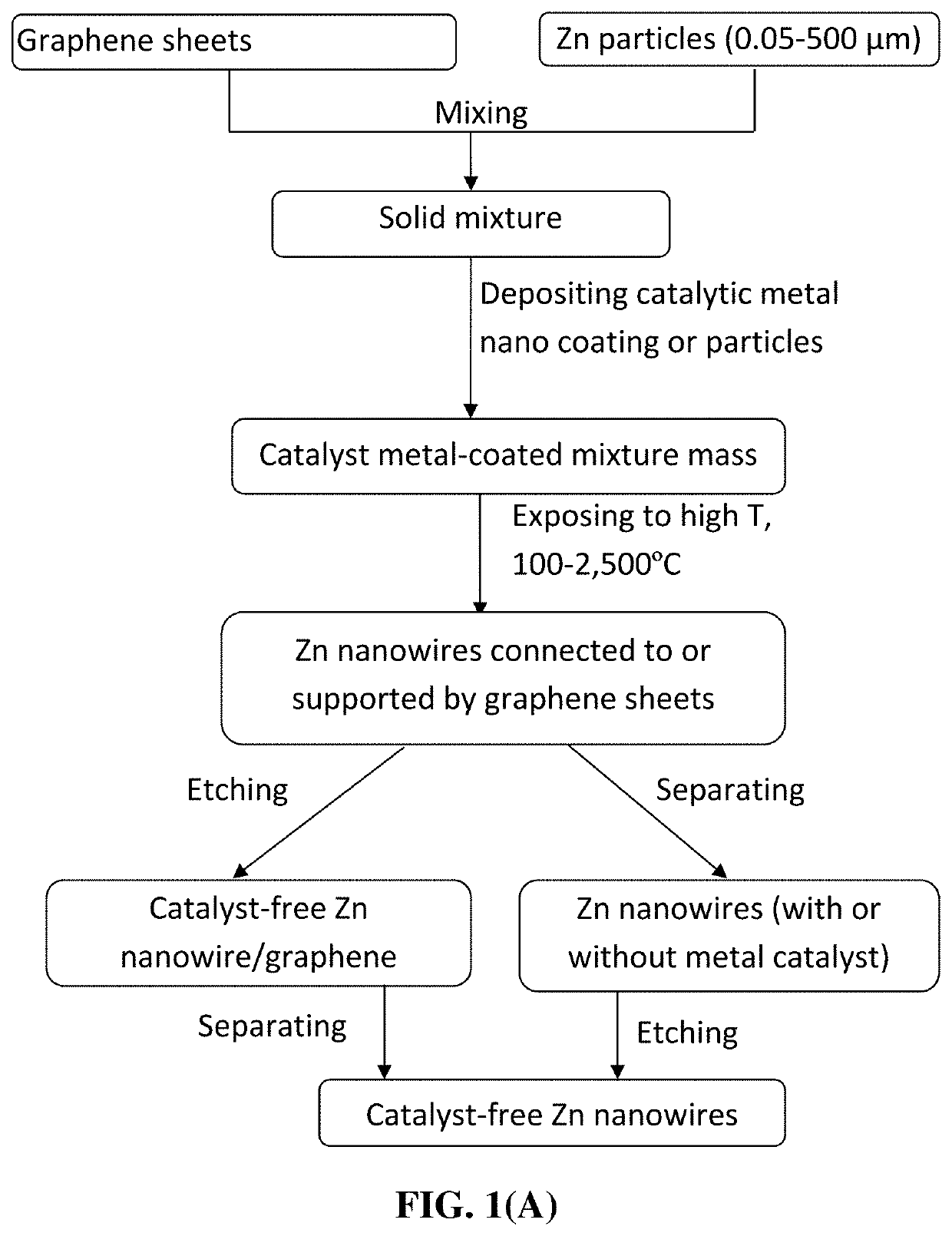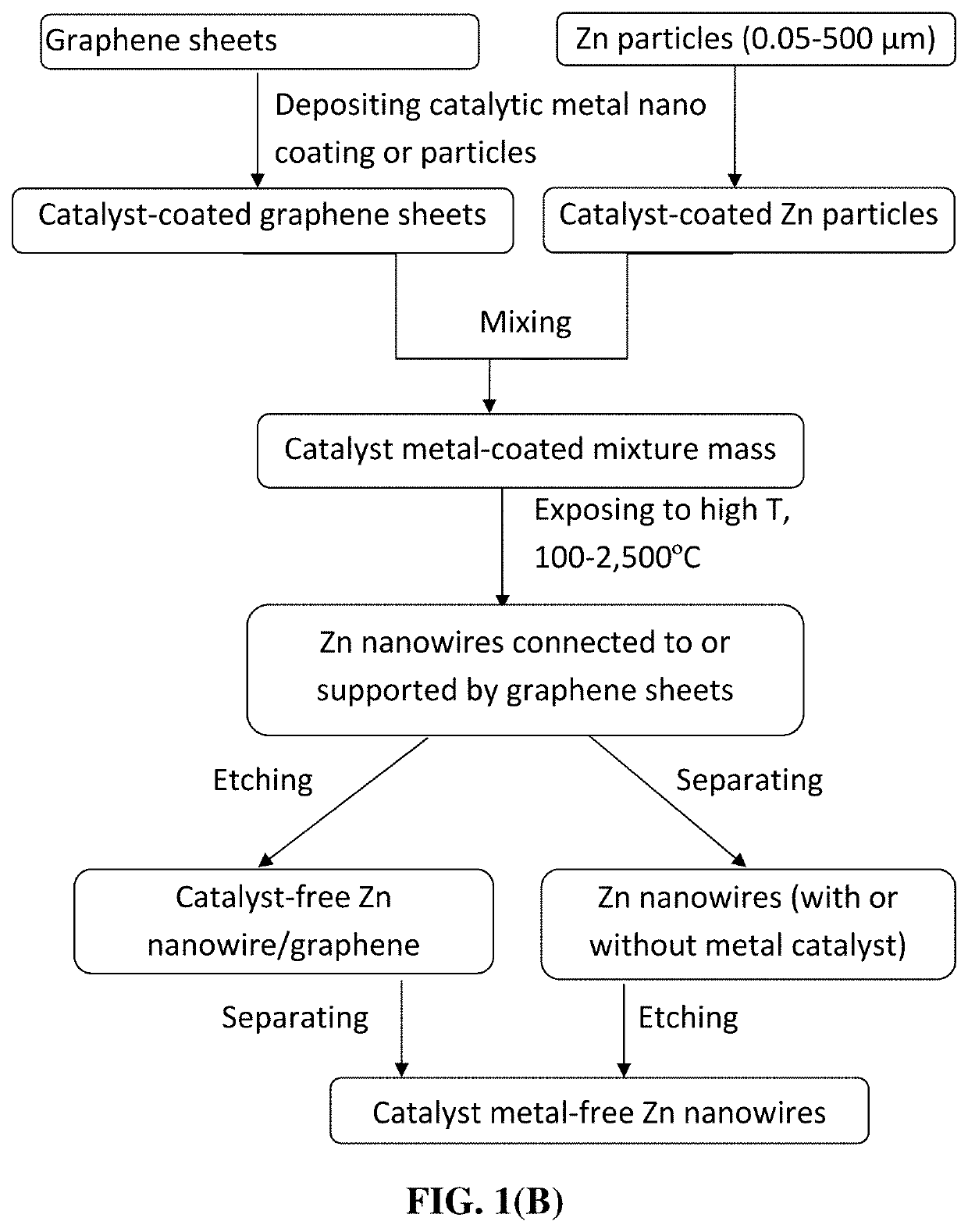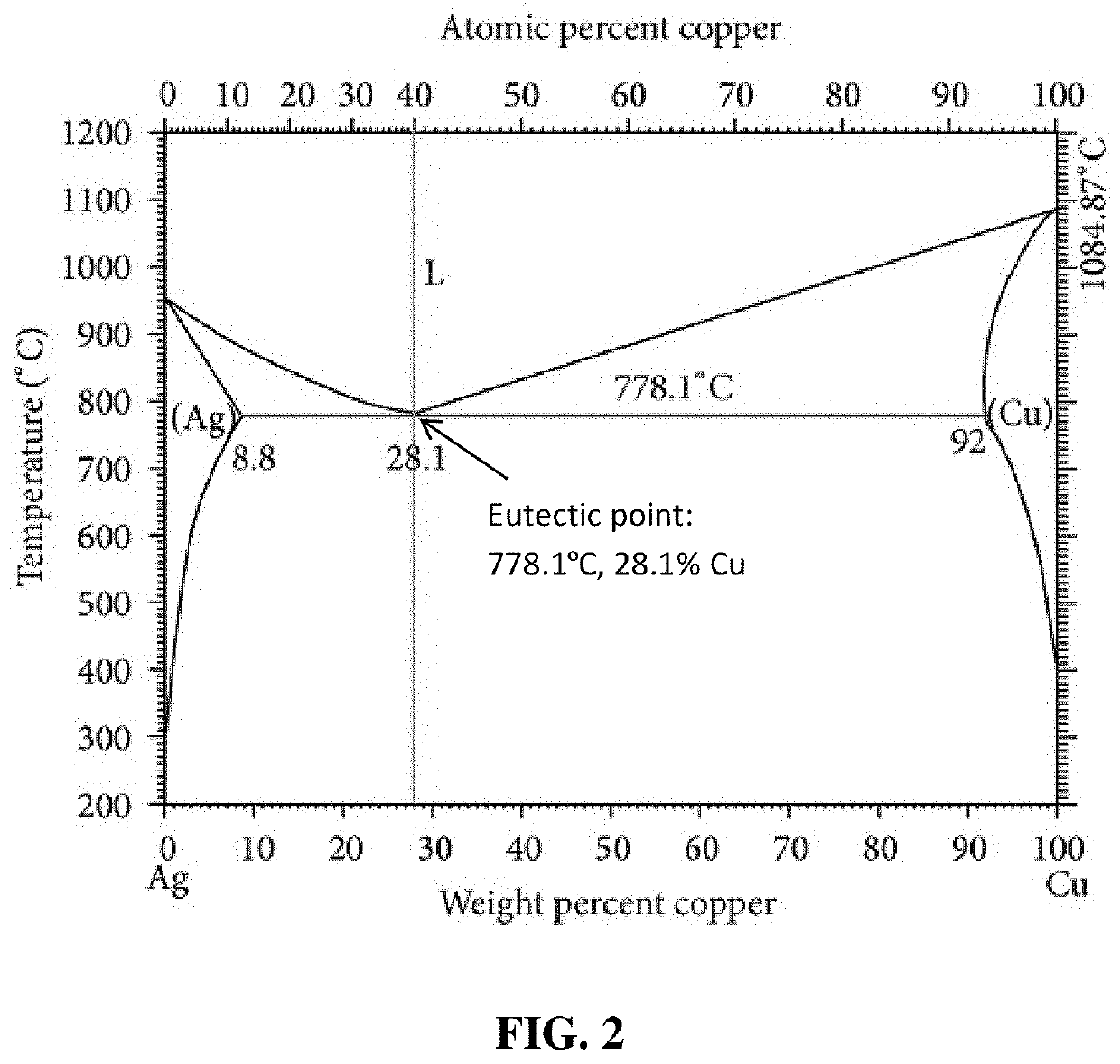Process for producing metal nanowires and nanowire-graphene hybrid particulates
a technology of nanowires and hybrid parts, which is applied in the manufacturing process of electrodes, cell components, electrochemical generators, etc., can solve the problems of limiting the total capacity and energy density of a battery cell, severe and rapid battery performance deterioration, and mainly performance fad
- Summary
- Abstract
- Description
- Claims
- Application Information
AI Technical Summary
Benefits of technology
Problems solved by technology
Method used
Image
Examples
example 1
Preparation of Graphene Oxide (GO) and Reduced GO Nanosheets from Natural Graphite Powder and their Porous Paper / Mats Containing Ge Particles and / or Metal Salt
[0110]Natural graphite was used as the starting material. GO was obtained by following the well-known modified Hummers method, which involved two oxidation stages. In a typical procedure, the first oxidation was achieved in the following conditions: 1100 mg of graphite was placed in a 1000 mL boiling flask. Then, 20 g of K252O8, 20 g of P2O5, and 400 mL of a concentrated aqueous solution of H2SO4 (96%) were added in the flask. The mixture was heated under reflux for 6 hours and then let without disturbing for 20 hours at room temperature. Oxidized graphite was filtered and rinsed with abundant distilled water until neutral pH. A wet cake-like material was recovered at the end of this first oxidation.
[0111]For the second oxidation procedure, the previously collected wet cake was placed in a boiling flask that contains 69 mL of ...
example 2
Preparation of Single-Layer Graphene Sheets and Porous Graphene Mats from Mesocarbon Microbeads (MCMBs) to Support / Promote Growth of Metal Nanowires
[0116]Mesocarbon microbeads (MCMBs) were supplied from China Steel Chemical Co., Kaohsiung, Taiwan. This material has a density of about 2.24 g / cm3 with a median particle size of about 16 μm. In one example, MCMB (10 grams) were intercalated with an acid solution (sulfuric acid, nitric acid, and potassium permanganate at a ratio of 4:1:0.05) for 48-96 hours. Upon completion of the reaction, the mixture was poured into deionized water and filtered. The intercalated MCMBs were repeatedly washed in a 5% solution of HCl to remove most of the sulfate ions. The sample was then washed repeatedly with deionized water until the pH of the filtrate was no less than 4.5. The slurry was then subjected ultrasonication for 10-100 minutes to fully exfoliate and separate GO sheets. TEM and atomic force microscopic studies indicate that most of the GO she...
example 3
Ag-Assisted Growth of Cu Nanowires from Cu Particles
[0120]An amount of Cu powder, with or without graphene sheets, was exposed to Ag sputtering to obtain a mass of Ag-coated Cu particles or a mixture mass of Ag-coated Cu particles and Ag-coated graphene sheets. A mass of Ag-coated Cu particles and a mixture mass were slowly heated to above Te (reaching 880° C.>Te). The heating rate was 20 degrees / min (centigrade scale). The material systems were allowed to stay at this high temperature (880° C.) for 1 hour and then cooled down to 790° C. (slightly above Te) and stayed at 790° C. for 1 hour, followed by naturally cooling down to room temperature. This led to the formation of Cu nanowires from the Ag-coated Cu particles. In the absence of graphene sheets, the diameter of Cu nanowires produced is in the range from 23 nm to 46 nm. With graphene sheets, the diameter of Cu nanowires is from 10 nm to 21 nm.
PUM
| Property | Measurement | Unit |
|---|---|---|
| thickness | aaaaa | aaaaa |
| size | aaaaa | aaaaa |
| particle diameter | aaaaa | aaaaa |
Abstract
Description
Claims
Application Information
 Login to View More
Login to View More - R&D
- Intellectual Property
- Life Sciences
- Materials
- Tech Scout
- Unparalleled Data Quality
- Higher Quality Content
- 60% Fewer Hallucinations
Browse by: Latest US Patents, China's latest patents, Technical Efficacy Thesaurus, Application Domain, Technology Topic, Popular Technical Reports.
© 2025 PatSnap. All rights reserved.Legal|Privacy policy|Modern Slavery Act Transparency Statement|Sitemap|About US| Contact US: help@patsnap.com



